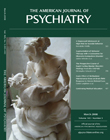Alzheimer’s Madonna
Alzheimer’s disease is hard to talk and think about and even harder to accept. It pitilessly cuts the afflicted off from the self and points out to all of us how fragile the mind is. Like a mythical land, it lies beyond the sun, far from the hum of life. It calls to mind the river Lethe, the river of forgetfulness of Greek and Roman myth, from which mortals must drink before embarking on the journey to the underworld.
As medicine does work on the body, so art does work on the soul. It does this by binding, in the work of art, psychic energies and storing them. These energies are the emotions, ideas, and experiences felt by the artist that made the work, which are transformed into a spatial or temporal structure. These energies can be released and used by whoever experiences them, for his or her own psychic work.
Throughout history, people have made art. It is one of the things that the soul does to care for itself, to create itself. Sculpture is an art form that exists in space. It is a transformation of subjective experience, which is invisible and formless, into something solid and real, visible to all. By making a subject into an object, it transforms the nature of subjective experience.
When the Black Death cut through Europe in the Middle Ages, ravishing not only the body but the psyche, one of the responses to the tragedy was the image of the Pieta. It is an image that literally holds the fear of death, and mitigates it, by replacing an absence with the presence of beauty. The Madonna is a particular form of the universal archetype of the Great Mother, dating back to Neolithic times.
I made the sculptureAlzheimer’s Madonna because I felt a need to address the fear of Alzheimer’s disease. I had worked as a resident on the geriatric psychiatry unit, and this made a strong impression on me. I do not intend the sculpture to be religious; rather, I consider the Madonna part of our common cultural heritage, in one form or another recurring throughout religions and epochs.

In the sculpture, both figures turn in a spiraling motion, as in a dance. As she stands at the beginning of adult life, he marks the end. Together, they form a kind of whole, as we each, in our own psyche, carry them inside of us—the image of hope and youthful beauty, which denies any reality but eternal youth, and the image of our decline, of the waning of our powers. My intention was to convert something potentially frightening for most of us—old age, disease—into something that can be perceived in a softer light.



